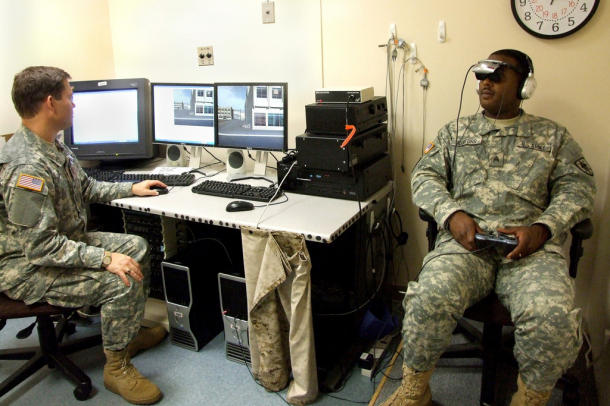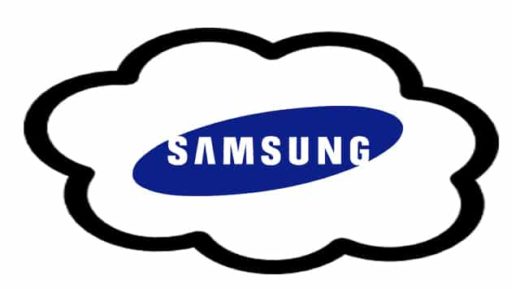In September 2008 Army Col. Michael J. Roy, left, who oversees the exposure therapy at Walter Reed Army Medical Center, demonstrates with Army Sgt. Lenearo Ashford how a life-like simulator might help treat PTSD.
Post-traumatic stress, which is estimated to afflict one in five veterans of the Iraq and Afghanistan wars alone, is typically diagnosed through behavioral screenings and is often considered a “soft” disorder with no known biomarkers.
“It’s like depression in that it can be hidden by the sufferer, it can be latent, and it can be re-activated,” says Apostolos Georgopoulos, a professor of neuroscience at the University of Minnesota. “That’s a major issue for the Army, which has to decide whether to re-deploy troops who have had it.”
Georgopoulos has previously discovered biomarkers for people afflicted with multiple sclerosis, Alzheimer’s disease, schizophrenia, chronic alcoholism, and other disorders. Thanks to his team of researchers from both the University of Minnesota and the Minneapolis VA Medical Center, PTSD might soon be far more easily diagnosed through a distinct pattern of brain activity, according to their study published in the Journal of Neural Engineering.
To measure this activity, researchers used magnetoencephalography (MEG), a test that measures magnetic fluctuations as groups of neurons fire together far faster than systems such as CT scans and MRIs.
Magnetoencephalography may be considered cutting edge, but it’s by no means new technology. Researchers have used the test since the late 1960s, and it has even been reported as being able to predict when people make mistakes. Perhaps best of all, the mapping of synchronous neural interactions (SNI) works regardless of what the person being observed is doing.

In this study, lead researcher Georgopoulos and his team asked 74 military veterans who had already been diagnosed with PTSD and 250 “healthy” volunteers to stare at a dot for up to a minute while magnetic signals were collected. This provided data on each subject’s brain while at rest.
Noting “a pattern of miscommunication that was nearly unique to PTSD patients,” the SNI approach alone was able to identify people as PTSD patients or controls more than 90 percent of the time.
Researchers hope that their findings might help override the stigma that PTSD is a form of weakness in one’s character or that it is a bunk disorder, and that the test might encourage more people to be tested and, ultimately, treated.
Lead researcher Apostolos Georgopoulos says his
test is much stronger than other diagnostic tools
currently being accepted by courts for other disorders.
“The main challenge with PTSD–with the military, emergency services, or journalists–isn’t diagnosing it,” Neil Greenberg, a researcher in military psychiatry at King’s College London, tells BBC News. “It’s with getting people who might have the condition to come forward and have an assessment and treatment.”
To be sure, this relatively small study barely scratches the surface. The researchers say they want to evaluate 500 vets and 500 civilians to further test their findings, and it will be important to investigate whether certain pre-existing conditions that are also PTSD symptoms, i.e. anxiety and insomnia, skew the results.
Still, Georgopoulos says, “Compared to evidence from functional MRI and other diagnostic tools currently being accepted by courts for other disorders, this test is much stronger and has a higher probability of being accepted as evidence by courts.”
Source: Cnet News



